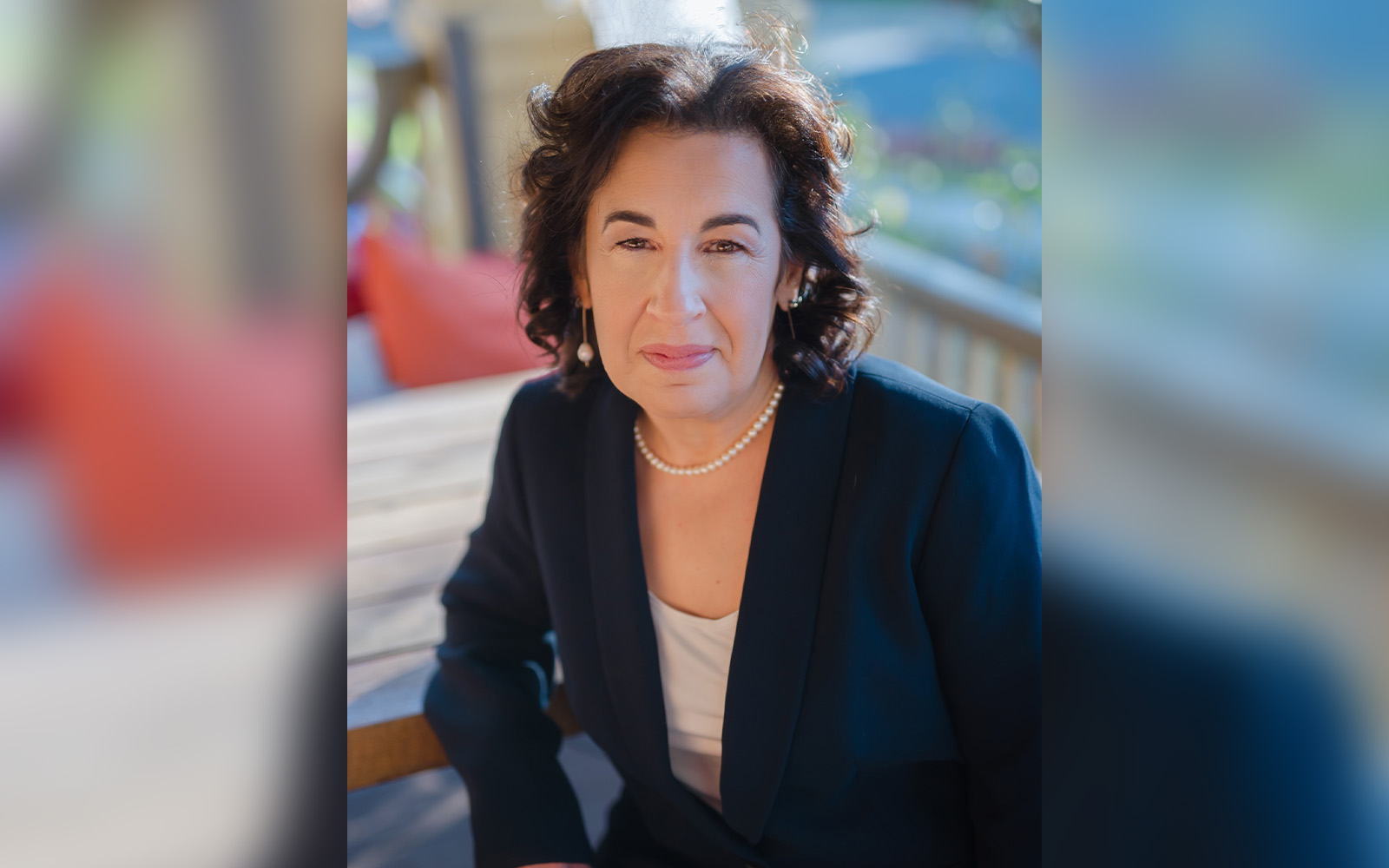
Professor Nora Madjar, a 20-year faculty member who has won multiple teaching awards and is a leader in curriculum development and review, has been appointed Associate Dean for Undergraduate Programs at the School of Business. Continue Reading
January 17, 2023

Professor Nora Madjar, a 20-year faculty member who has won multiple teaching awards and is a leader in curriculum development and review, has been appointed Associate Dean for Undergraduate Programs at the School of Business. Continue Reading
January 4, 2023

As the executive director of the Connecticut Center for Entrepreneurship & Innovation (CCEI), Jennifer Mathieu has helped some 500 startups thrive.Continue Reading
December 21, 2022
UConn Today – Whether it’s a graduation party, a milestone birthday, or a toast to a promotion, celebrations can benefit participants’ health and wellbeing.
Those are the findings of UConn marketing professor Danielle Brick, whose research was just published in the Journal of Public Policy & Marketing.
December 20, 2022
As the semester draws to a close there is much to reflect upon. I am grateful every day for the engagement and involvement of UConn School of Business alumni.
As we engage together, I often hear, “I didn’t know you did that!” Here is a recent example of something we do that most don’t know.
Our Family Business Program focuses on the special issues confronted by family businesses. We create a forum for people with shared interests to exchange ideas, explore alternatives, and engage with each other and other business experts.
Family businesses have all the problems of any business. But they also face the inherent family dynamics that arise from family members reporting to each other. How do you confront the difficult conversation when you fire a cousin? How do you ensure that important, non-family professionals feel included and respected? Perhaps this is just another layer of complexity in managing complex organizations. But it is a very important, distinct, and thick layer.
The Family Business Program, under the guidance of our Connecticut Center for Entrepreneurship & Innovation, presented a workshop on business transition last month, featuring a distinguished panel of experts who shared their knowledge and experiences.
Let me share a few of the key ideas with you:
It is indeed a tangled web we weave and there are many ways for family business transitions to go wrong. Two things stood out to me: the need for open, honest communication within the family, but also within the business to set the stage for the business to evolve. Another take-away was that “you cannot read the label from inside the bottle.” There is certainly a tendency for all of us to think we know what we need to know, but the value of an independent outside assessment cannot be overstated. Transitions are better when supported by some independent confirmations of where the business stands and what its future can look like.
The Family Business Program welcomes new members. To learn more about it, please visit: https://ccei.uconn.edu/family-business-program/
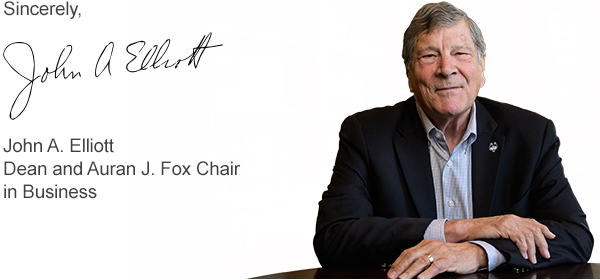
December 19, 2022
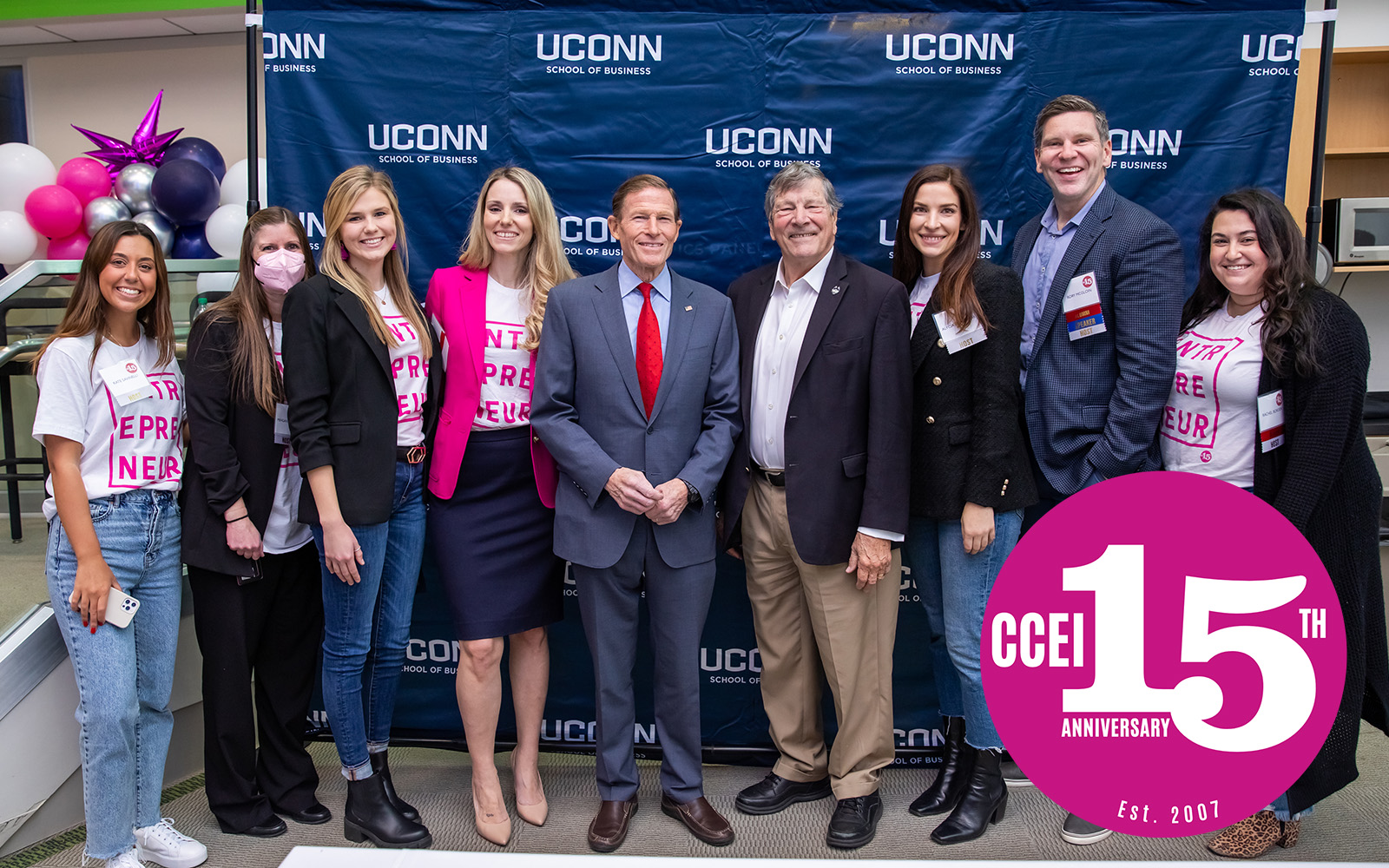
When Jeremy Bronen ’20 [ENG] and Timothy Krupski ’15 [ENG] ’21 MS [ENG], ’21 MBA launched their business in 2020, the idea of raising $50,000 in funding seemed almost impossible.Continue Reading
December 14, 2022
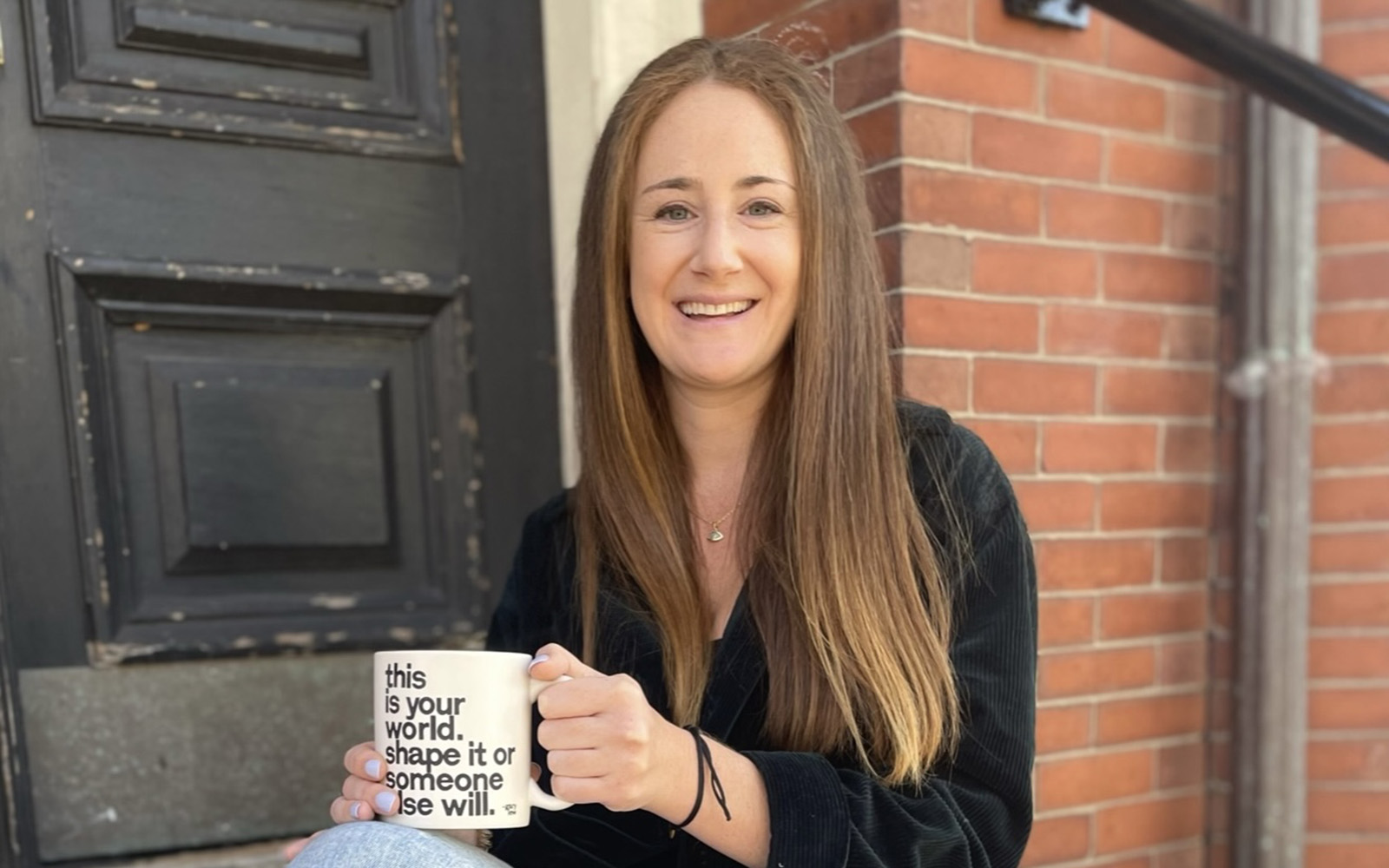
UConn alumna and serial entrepreneur Michelle Wax ’12 has created her fourth startup, a customized coach service to help people meet more compatible dating partners using a personalized strategy.
Her company, called Michelle Wax High Caliber Dating & Relationships, isn’t a matchmaking service. Rather, Wax helps clients define what they are looking for, build self-confidence, and find new ways to break out of dating ruts.
“Many people tell me that dating is boring, draining, or lackluster, but it doesn’t have to be that way. Dating can be exciting,” Wax said. “Unfortunately dating is something that people are expected to know how to do. But if you don’t have good role models, you can struggle.”
In fact, a 2020 study by the Pew Research Center said nearly half of people surveyed believe that dating today is much harder than it was a decade ago. During the pandemic, people felt disconnected and now they are ready to prioritize their relationships, Wax said.
“Many people meet the love of their life through online dating but, like an investment portfolio, you need to diversify,” Wax said. “One of the things we talk about is ‘What event or organization can you attend that would allow you to meet new people?'”
“Through one of my other endeavors, “The American Happiness Project,” I learned that much of happiness in life comes down to our relationships, not only with other people but also with ourselves,” Wax said. “Often the people in our lives are a mirror of who we are.”
Wax, who credits her grandmother with instilling in her the attitude to pursue your dreams, said she addresses dating in two ways. She wants her clients to discuss their mindset and beliefs around dating and address any issues that are holding them back. She also coaches them on the practical approach to meeting new people, such as how to keep a conversation lively or how to walk into a restaurant and make a good impression.
The dating business is now a $7.5 billion industry, with the majority of it concentrated in the United States. Sixty-nine percent of adults are “partnered”—meaning they are married, living with someone, or in a committed relationship.
Of those who are unattached, only about half of them are interested in dating. For those who don’t want a relationship, 20 percent said they are too busy, 18 percent feel they have no luck in dating, 17 percent feel no one would want to date them and 17 percent say they are too old to date. Among younger people, many said they just like being single.
Among those happily coupled, the most popular way to meet a partner was through family or friends. But meeting a prospective partner online (either through a dating app or via social media) dating is common among younger adults and the LGBTQ community. Others said work, school, bars and restaurants, and places of worship are their choices for meeting dating prospects.
Wax said her coaching service is available to everyone, but that her typical client is between 25- and 45-years old.
Wax began her entrepreneurship journey in her 20s, owning two successful companies in the food industry, including a cookie-baking company. Although the businesses were doing well, but she found herself easily stressed and with self-doubts.
That experience propelled her to travel across the country in search of the key to happiness. “Happiness is everyone’s ultimate goal, but how do we get there?” she has said. “We think that we will be happy when we reach that accomplishment or buy the house, or start the company or meet the perfect person. It’s always in the future.”
After speaking with happy people—from all 50 states and different walks of life and various circumstances—she discovered that the key to happiness is to take control of your life and be purposeful. Whether speaking with senior citizens or teenagers, they all said they don’t need to accomplish something enormous to feel fulfilled. It often starts with small steps.
Her findings resulted in the “American Happiness Project,” a documentary followed by workshops and programs designed to make participants feel more energetic and have a greater sense of fulfillment. She combined her discoveries with research on the neuroscience of how human brains are wired and how people can use that to optimize happiness.
Her latest business is related, but narrows the focus exclusively to dating. In fact, before embarking on her new company, she tried the approach on herself, and met the man she’s been dating for two years.
In addition to running her business, Wax is the entrepreneur-in-residence at UConn’s Werth Institute for Entrepreneurship & Innovation, where she is creating new mentoring partnerships for students and teaching workshops on attaining business goals.
“I feel like I’ve come full circle since I was a UConn student,” said Wax, who majored in management with a concentration in entrepreneurship and was a leader in the Entrepreneur Club. “I’m the same person that I was when I was a student here, but I’m also completely different.”
She tries to use her experience as an entrepreneur to inspire others.
“I believe the value I bring is seeing that a unique path or approach to life can be done, and you can create the reality that you want, regardless of what’s happened in the past or what other people are telling you is possible,” she said. “Starting a company can be risky, but I see the bigger risk is being in the exact same spot one year from now and regretting not starting. The time is going to pass anyway, so you may as well go after what you want.”
New Year’s Eve is often the time when people set goals for their career or their health, and Wax believes everyone should have relationship goals as well.
“You can’t control when people come into your life, the timing of it,” Wax said. “But I encourage people to be a little bolder. I think many people believe they should follow the same ‘rule book.’ There are many people out there, and you shouldn’t hesitate to stand out or take a chance.”
“I recently had a woman go through coaching who had been single for a while, and told me she is starting to set boundaries to ensure her happiness,” Wax said. “It was the first time she felt happy being single.’
Wax tells her clients that they can create the reality that they want.
“We are more in control of our lives than we believe. There’s incredible power and control in the belief that you can achieve something,” she said. “When you learn to pursue what you really want in a relationship, it has a beautiful trickle-down effect in other areas of your life as well.”
Be The One will offer several free introductory online coaching courses this winter. For more information, please visit www.michellewax.com/events.
December 7, 2022
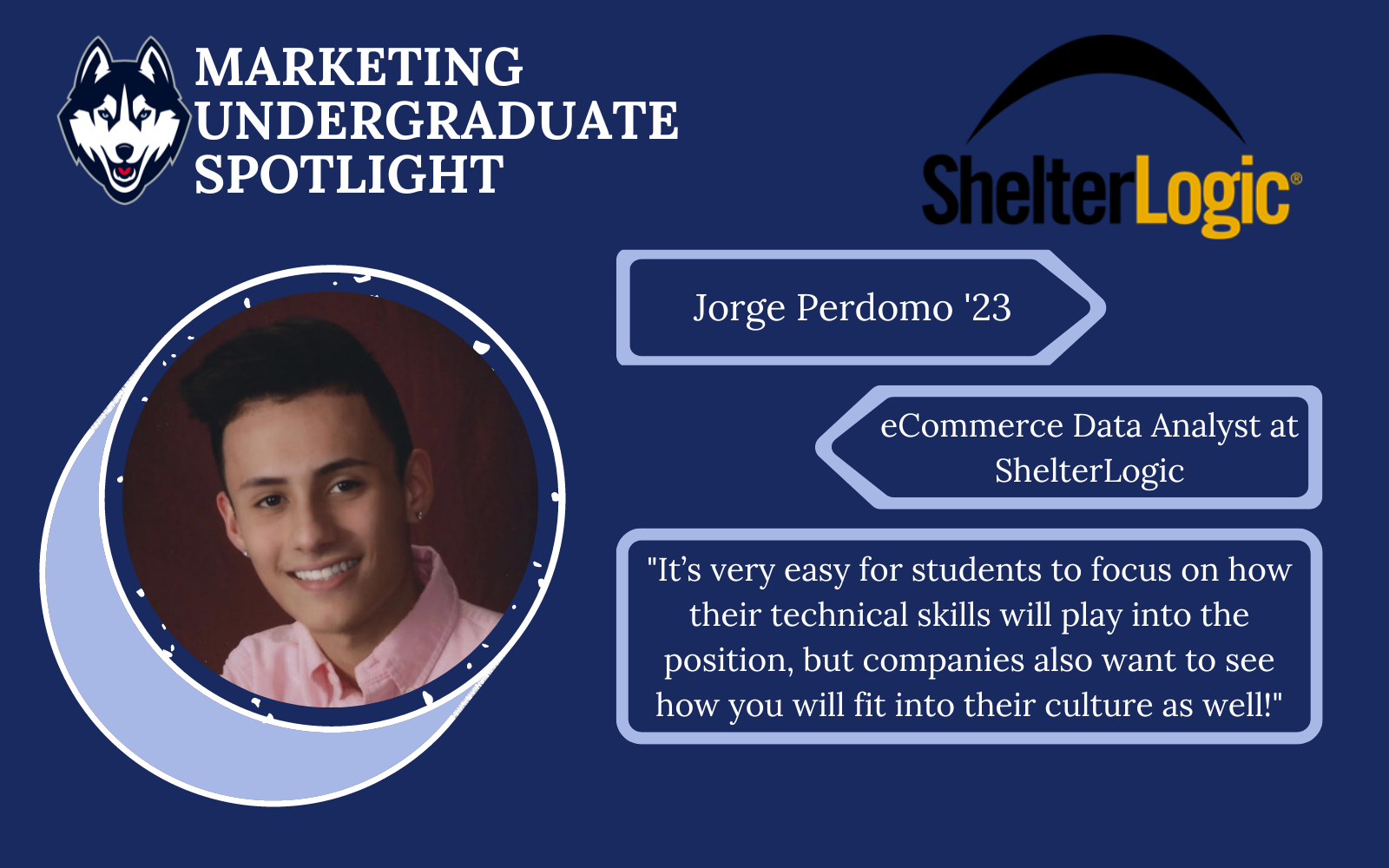
Jorge Perdomo is a senior Marketing Management major with a concentration in Digital Marketing & Analytics planning to graduate from UConn in May 2023. Jorge works as an eCommerce Data Analyst for ShelterLogic and has been in the position since August 2022. Jorge started his journey with ShelterLogic on Handshake. “I had a recruiter reach out to me and suggested that I apply.”, he recalls. After applying, the recruiter scheduled an interview with the hiring manager, supervisor, and the head of HR to further discuss Jorge’s experiences and future responsibilities. The most prominent factor that attracted Jorge to this position was how it integrated both of his interests, Data Analytics and Marketing, into one role. He had found in his search that companies usually prioritize one or the other with their internship offerings. Jorge also enjoyed the hands-on aspects of the role, “I was told that I’d be able to join in and participate in weekly meetings across different departments to discuss growth opportunities and areas that can be improved on, which stood out for some of my other offers”, he states.
At ShelterLogic, Jorge is primarily responsible for reviewing data on listings with well-known retail customers such as Home Depot and Walmart. Jorge searches for any inconsistencies in the data, and then utilizes the customers’ portal to correct any of the noticeable errors. He also must gather data on any new and existing products with Salsify, a customer relationship management software which houses all of ShelterLogic’s information regarding our products, and export it onto the retail portal for customers. With that being said, “One of the greatest things about this position is that no task or day is the same.”, he adds. Jorge’s favorite professional experience so far has been learning all the different portals that customers are using; “As a consumer, it’s so easy to just see a listing on Amazon or Walmart and click add to cart but going behind the scenes and seeing the steps required to create an item from the very beginning and working in all the data until the listing goes live has easily been one of my most favorite and educational tasks.”, he notes.
A piece of advice Jorge offers to students is to not be so hard on yourself throughout your application process. He would like to emphasize the importance of understanding what your soft skills are and how you could apply them into specific positions. “It’s very easy for students to focus on how their technical skills will play into the position, but companies also want to see how you will fit into their culture as well!”, he shares; “There will be companies that do not see you as a fit, and that’s ok! It’s important to always ask for feedback and pointers on what you could improve on. Take the whole interview process as a learning experience and make sure to remind yourself that rejection is just redirection!”.
November 29, 2022
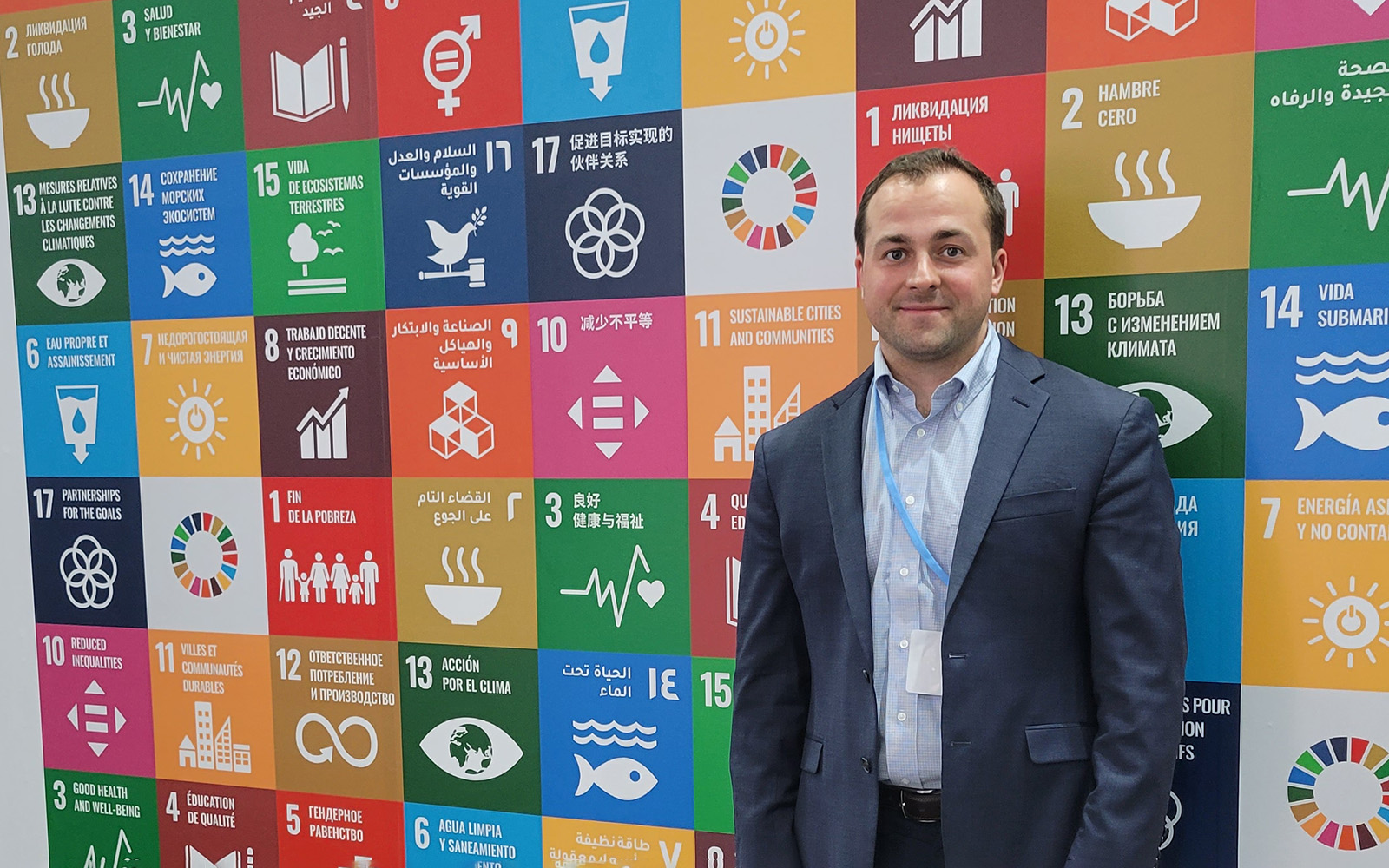
MBA candidate Ben North expected his experience at the 2022 United Nations Climate Change Conference (COP 27) in Egypt to be impactful, but it exceeded his expectations from the beginning.Continue Reading
November 18, 2022
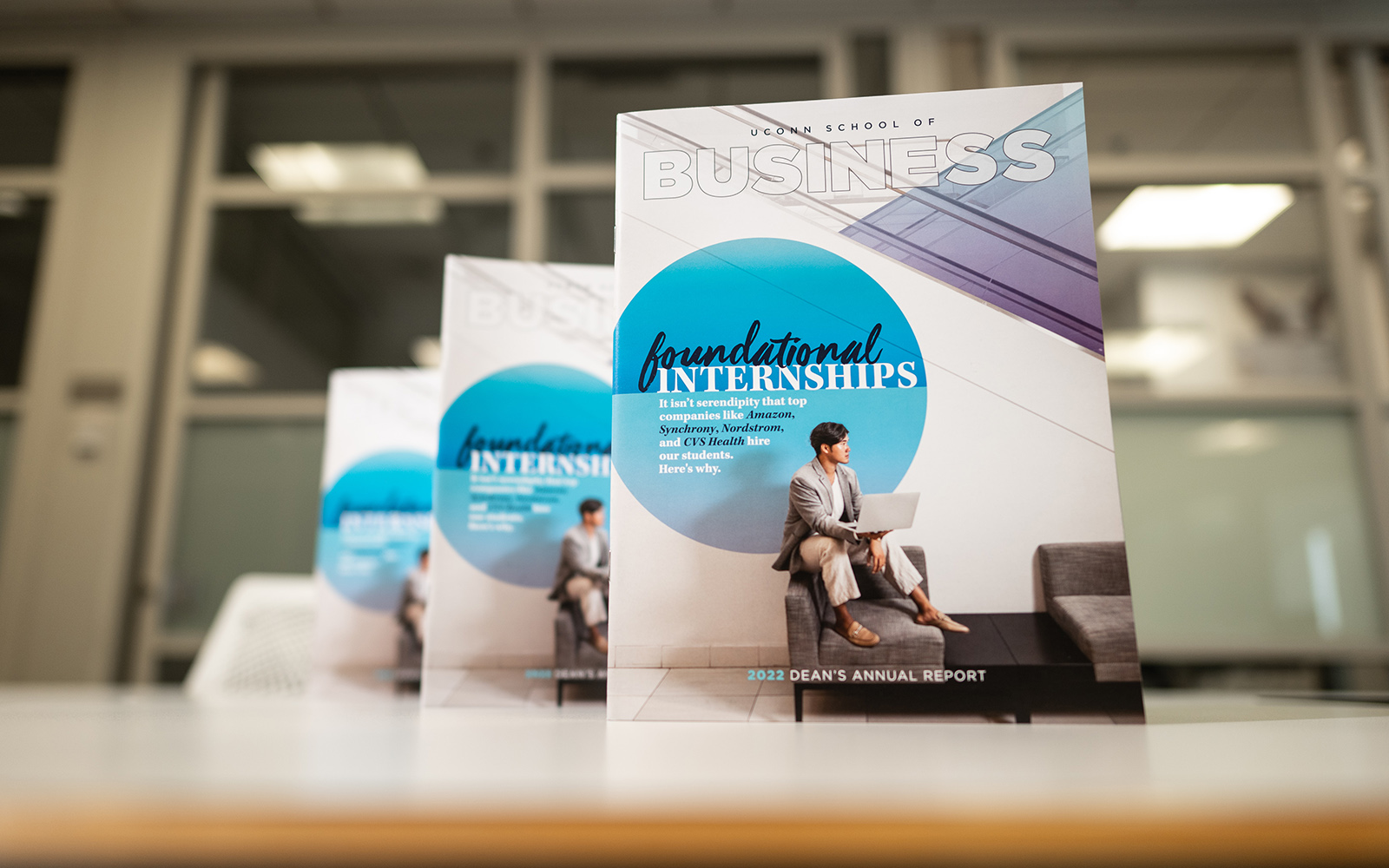
Today I’d like to introduce you to a few of the outstanding students at the UConn School of Business, the many achievements of our faculty, and the myriad of successes we have celebrated in the past 12 months.
In the pages of this year’s Dean’s Annual Report, you will read about Rashana Weerasinghe, who is completing her ninth (that’s right, ninth!) internship as a UConn student, this time at Amazon Robotics in Boston, where she is helping the company meet its sustainability goals.
You will also meet Linbing Pan, featured on our cover, who had an incredible summer internship at Nordstrom. During an introduction to alumnus Mike Koppel ’78, the former executive vice president and CFO of Nordstrom, Linbing expressed his passion for fashion and his interest in corporate management. Mike was able to advise Linbing on steps he could take to advance his interests.
These are just two of our many outstanding students who are pursuing active business experiences as part of their UConn journey. Our carefully designed and individualized advising program prepares our students for meaningful internships that are stepping stones to successful careers. Our well-connected faculty, successful alumni, and other friends of UConn give them the skills that they need, so when they land a big interview, they are ready to impress. Their stories begin on page 6.
Our business programs continue to produce outstanding results, with 88 percent of our Class of 2022 undergraduates securing jobs, entering graduate programs, or joining the military within three months of commencement. Be sure to see our top employers, rankings, and our placement statistics on pages 16-17.
Our faculty continue to make great strides in research that has real-world impact. In this issue, we feature three of our Operations and Information Management researchers who are tackling issues that impact us all, including how insurance companies can identify safe drivers, how the trucking industry can be more efficient, and how supply-chain management can be enhanced by lessons learned in the pandemic. Their work is featured on pages 26-29.
Our students are keenly focused on the intersection of business and society, seeking opportunities to learn and apply their interest in sustainability, corporate responsibility, and climate action. Environmental, social, and corporate governance (ESG) influences business strategy and investors today more than ever, and we are meeting that need with a variety of programs and experiences. On pages 30-31, you will meet faculty and recent alumni who are making strides to elevate the social conscience of business.
I hope you enjoy reading about the highlights of a busy, exciting, and productive year. As I write this, Thanksgiving season is upon us. We have much to celebrate and many people for whom we are grateful. I wish each of you a holiday season of personal joy, professional satisfaction, and the abundant love of those you hold dear.

November 17, 2022

A hard-working team of MSBAPM students took home second-place, and a $20,000 award, in the fiercely competitive Humana-Mays Healthcare Analytics Case Competition. Continue Reading